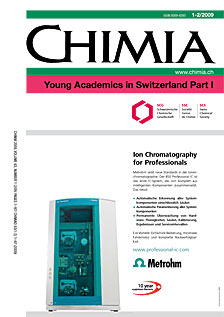Functionalized Silicate Nanochannels: Towards Applications in Drug Delivery and Solar Energy Conversion
DOI:
https://doi.org/10.2533/chimia.2009.8Keywords:
Drug delivery, Luminescent solar concentrator, Mesoporous silica, ZeoliteAbstract
The defined pore networks of silicate-based molecular sieves are attractive for the development of highly organized inorganic/organic hybrid materials. Efficient energy transfer systems are obtained upon inclusion of dye molecules into the one-dimensional channels of zeolite L. The resulting host-guest materials form the basis for an advanced luminescent solar concentrator. The selective functionalization of the channel entrances with zinc phthalocyanine offers further possibilities in terms of employing the dye–zeolite composites for the sensitization of organic solar cells. Having larger pore sizes than zeolites as well as highly modifiable channel walls, mesoporous silicas have recently emerged as versatile starting materials for the synthesis of drug delivery devices. One of the most challenging aspects in this context is the control and the analysis of the functional group distribution. This topic is discussed on the basis of our recent work on the reaction of aminopropylalkoxysilanes with mesoporous silica MCM-41.Downloads
Published
2009-02-25
Issue
Section
Scientific Articles
License
Copyright (c) 2009 Swiss Chemical Society

This work is licensed under a Creative Commons Attribution-NonCommercial 4.0 International License.
How to Cite
[1]
D. Brühwiler, H. Ritter, J. H. Ramm, L.-Q. Dieu, C. Bauer, I. Dolamic, N. Gartmann, Chimia 2009, 63, 8, DOI: 10.2533/chimia.2009.8.







